May 19 - 25, 2019: Issue 405
Saving Grevillea Caleyi: Join The Baha’i Temple Bushcare Group
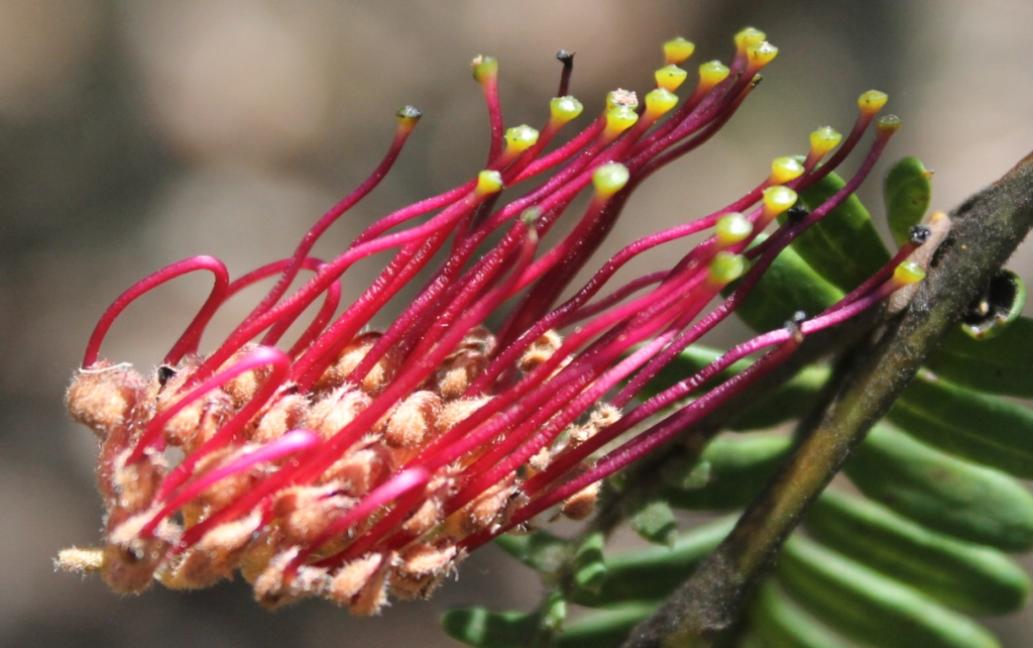
George Caley wrote in his 'An Account of a Journey to the Sea in the month of February 1805', of the plants discovered along his route. According to his diary, Caley set out from Macarthur’s farm at Pennant Hills on Monday February 18th 1805. He headed east northeast. As he approached the coast, the date not precisely recorded, he collected near a place he called ‘Seasight Hill’, later established as near Belrose, a Grevillea to which he gave the name ‘E. [Embothrium] pinnatum’.
Caley's four-day journey, ‘An Account of a Journey to the Sea in the month of February, 1805’, took him through present day St Ives to Belrose and then down through the bush to come out above where the Narrabeen Fitness camp now is. He reached Narrabeen Lagoon and the sea on February 20th, 1805. He returned by the upper reaches of Middle Harbour (Caley 1805).
He was accompanied by 'Daniel' or 'Moowat''tin' (c1791-1816) an Aboriginal Australian Darug man from the Parramatta area. There are a number of other spellings of his name, including Mow-watty, Mowwatting, Moowatting and Moowattye, which is said to mean 'Bush Path' and clearly infers how George Caley managed to find his way to Narrabeen from Pennant Hills.
Mr. Caley (June 10, 1770- May 23, 1829) was sent to Australia by Joseph Banks as a botanical collector on the "Speedy." He arrived in 1800 and settled at Parramatta, and soon afterwards set out the Botanical Gardens, becoming Superintendent. Some records indicate he sent over 10, 000 specimens back to Sir Joseph Banks in England. Many of those specimens have the annotation in Caley's hand of "got by Dan".
Robert Brown, considered ‘the father of Australian botany’, had a great admiration for Caley and had collected with him while in Australia. He wrote -
‘Grevillea is probably the most extensive genus of Proteaceae in New Holland. Besides the Proteaceae described or noticed in this paper, I am acquainted with several very beautiful species chiefly of Grevillea and Persoonia, discovered in New Holland by Mr George Caley, a most assiduous and accurate botanist, who, under the patronage of Sir Joseph Banks, has for upwards of eight years been engaged in examining the plants of New South Wales, and whose numerous discoveries will, it is hoped, be soon given to the public, either by himself, or in such a manner as to obtain for him that reputation among botanists to which he is well entitled.’ (Brown 1810a: 170).
Robert Brown, in a paper published in 1830, after first giving consideration to the name ‘Grevillea blechnifolia’, a name recorded on several specimen sheets at the time, ultimately named a plant Grevillea caleyi in his honour, (Brown 1830: 22).
Mr. Caley is also recognised in the orchid genus Caleana (the Flying Duck Orchid) and in Viola caleyana, Banksia caleyi, and Eucalyptus caleyi.
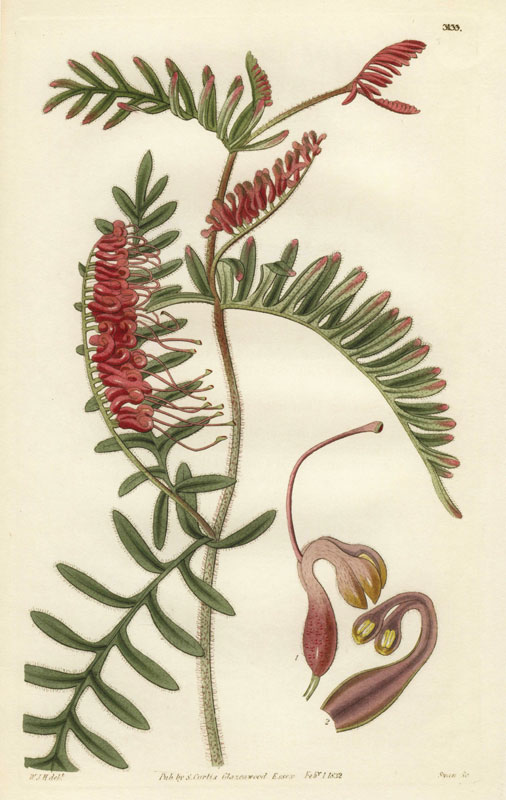
Grevillea caleyi, drawn 1832 by William Jackson Hooker (1785-1865)
At Ingleside and in some areas surrounding Grevillea caleyi is still present although it is now listed as a critically endangered species in New South Wales and at the Commonwealth level (gazetted May 30th, 2014).
The Pittwater Natural Heritage Association is coordinating a project funded by Greater Sydney Local Land Services and the NSW Office of Environment and Heritage Saving Our Species program.
- establishes the extent of the current distribution of the species;
- favours in-situ protection and management of threats at G. caleyi sites; raises awareness of the species and provides the community with information that assists with its conservation; and
- provides a greater understanding of aspects of the biology and ecology of the species that will assist future management
- Loss and fragmentation of habitat through clearing and development.
- Inappropriate fire regimes.
- Habitat degradation by invasion of weeds and pathogens.
- People using remnant bushland for recreation (e.g. bike trails) and disturbing critical habitat, individuals and substrate.
- Small population sizes in highly fragmented remnants.
- Rubbish dumping.
Bush Regenerators and volunteers of the Baha'i Grevllia Caleyi Bushcare Group in 2013. Image courtesy Erica Mahon.
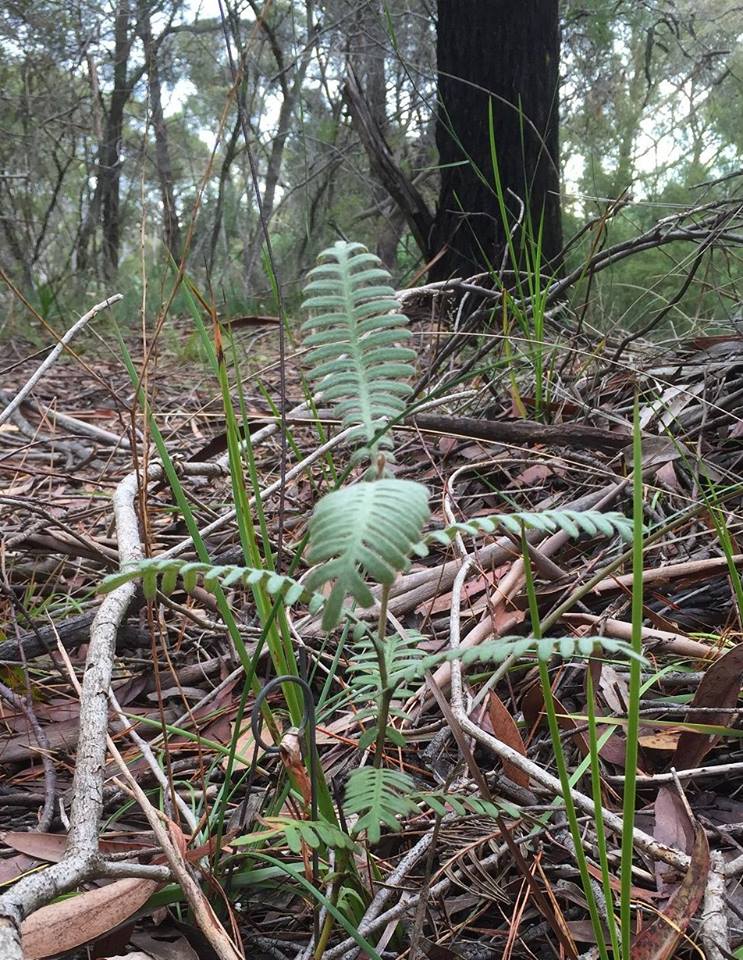
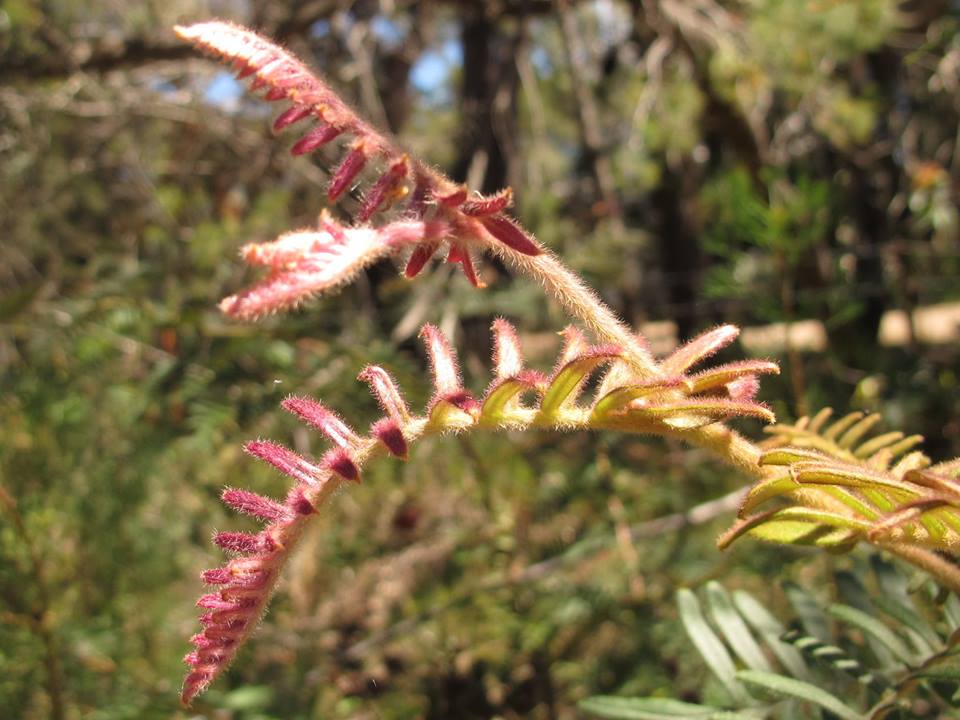
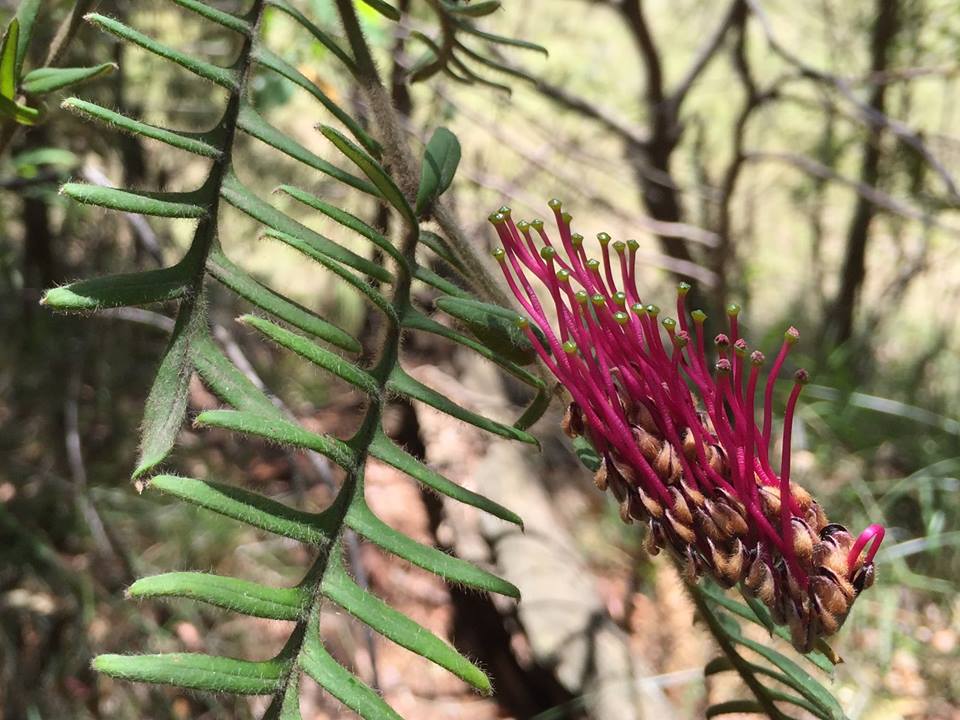
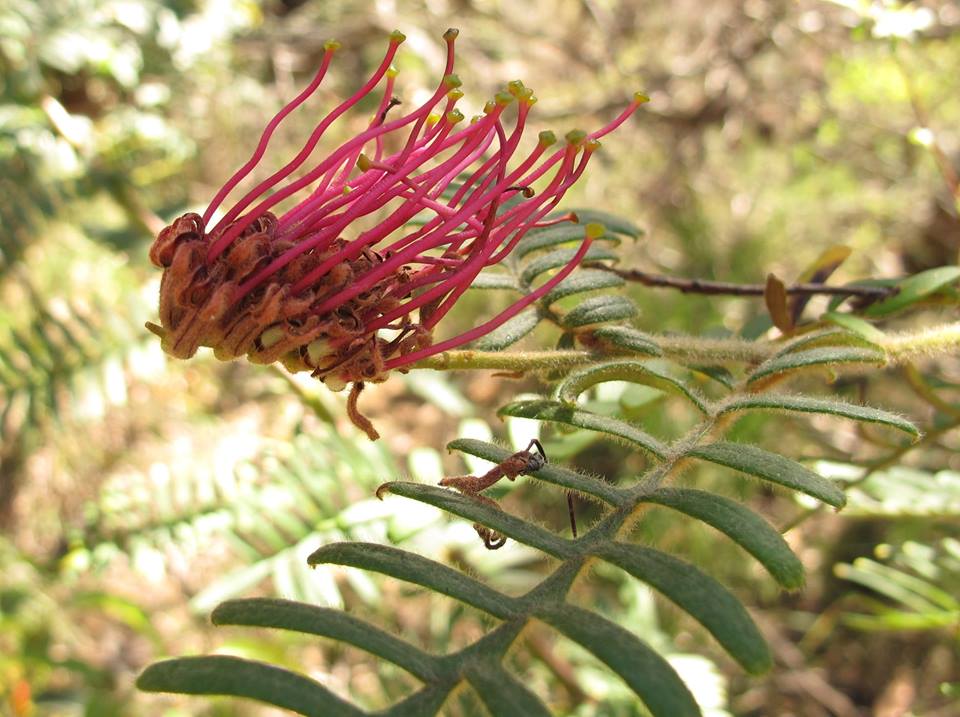
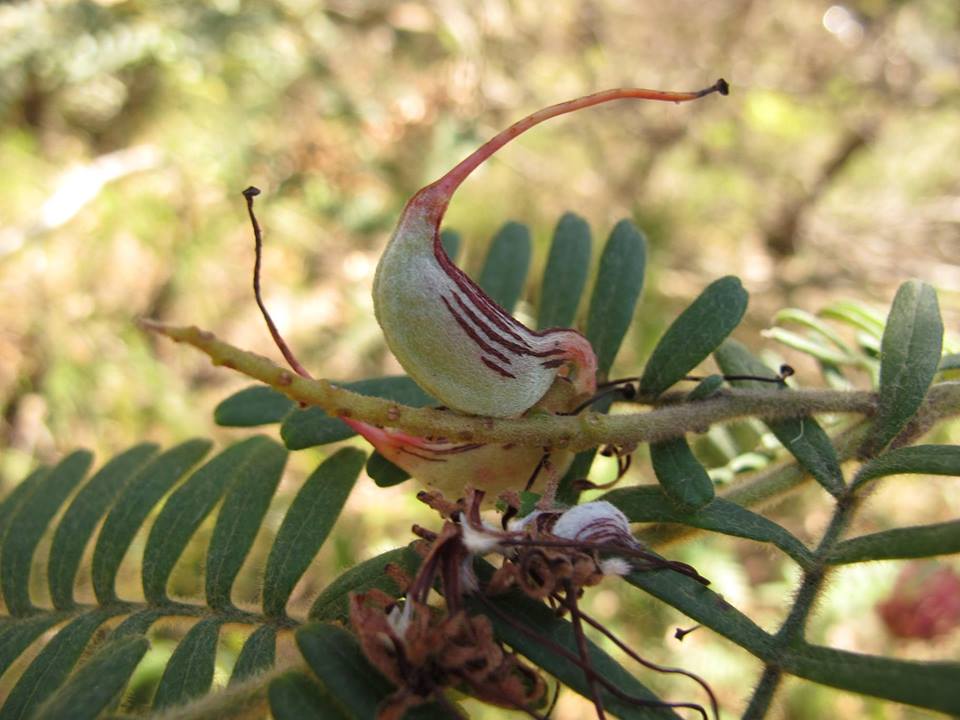
Grevillea caleyi
Published on 9 Mar 2015: by Office of Environment and Heritage
A medium to tall shrub, with long spreading branches, which grows to a height and width of up to 4 m. The divided green leaves are covered in soft, rusty hairs and are up to 15 cm long. The flowers, which open in late winter and spring, have a toothbrush-like appearance with racemes up to 8 cm in length and are dark burgundy-red in colour.Restricted to an 8 km square area around Terrey Hills, approximately 20 km north of Sydney. Occurs in three major areas of suitable habitat, namely Belrose, Ingleside and Terrey Hills/ Duffys Forest within the Ku-ring-gai, Pittwater and Warringah Local Government Areas.
GEORGE CALEY.
George Caley was the son of a Manchester horse dealer. What education he received was obtained at the Manchester Free Grammar school. He began his botanical studies by searching for plants mentioned in an old work on farriery as suitable for sick horses. He learnt Latin in order to be able to understand the terms used in botany.
Wishing to obtain a position as a collector of plants in foreign lands, he wrote to Sir Joseph Banks, who advised him first to have a proper grounding in the subject. To do this he suggested that Caley should obtain employment in a botanical garden. Caley did not relish this advice, but, nevertheless, he worked for a time at Kew Gardens, eventually returning to his home in Manehester. He again approached Sir Joseph Banks, who replied to him in the following terms :-
"I told you when I first wrote to you that unless you would gain your livelihood as a gardener, while you made yourself acquainted with the plants cultivated in the garden here, I did not mean to get employment for you as a botanical traveller. . . . . How you can be useful as a botanical traveller to send home seeds and plants till you have become acquainted with those already in England, I do not know."
Caley returned to Kew, and was eventually sent by Banks to New South Wales to collect specimens of plant life for him. Sir Joseph Banks applied to the Government for a passage for his collector, but Captain P. G. King, who was about to embark for New South Wales,in order to take up office as Governor, attached him to his suite, and thus he reached our shores.
Shortly after his arrival here in 1800, he was sent to Parramatta. Governor King announces this fact in a letter to Sir Joseph Banks, dated May 3rd, 1800 :
"I have fixed Caley at Parramatta, to which place he gives the preference, and as he is well lodged there I hope he will begin in earnest. I have marked out a botanic garden, to be under Colonel Paterson's direction. It is ready for receiving plants, and Caley has the use of Government House at Parramatta to dry his specimens."
In a later letter to Banks, King states: "If Caley does but answer your expectation in sending home such things as are rare and acceptable, I shall not mind his abuse, as I believe it is his nature. He has fixed his affections on a woman with a family. I have done all in my power to prevent the connection, but as Paterson thinks his being allowed to marry her will be the only means of making him quiet, as he appears to be flighty. I have given my consent after many violent struggles to send her away. Perhaps it may be better for Caley, but I doubt it much. He is now removed into a small house, fitted up according to his own direction, and we intend to establish a botanical garden near it when we have time."--(Historical Records, New South Wales, Vol. IV, P. 205.)
It does not appear, however, that he married this woman. From a letter written by Margaret Catchpole, dated May 12th, 1802, to her uncle, Mr. Wm. House (sic) Howes?, it would seem that he also paid his addresses to this famous lady. The letter is in the possession of Mr. H. E. Brooke, of Suffolk, England, and is referred to by Mr. J. H. Maiden, in an article on Caley (Agricultural Gazette October, 1903, P. 993.) "I have, at this time, a man to keep me company, and would marry me if I liked, but I am not for marrying. He is a gardener, and came out as a botanist, and to be allowed one hundred pounds per year and his position found him and a man to fetch wood and water, and one to go out with him to collect seed, sea-weeds; and all sorts of curiosities."
This description fits Caley. Peron, who visited New South Wales in 1802, makes mention of Caley and his garden. (Voyage to the Southern Hemisphere, P. 283.):-
"The whole eastern front of Rosehill, which is towards the town, is a very gentle declivity, on which appears the fine gardens in which many interesting experiments are made, with a view to naturalise foreign vegetables; here, also, are collected the most remark-able of the indigenous plants, intended to enrich the famous royal gardens of Kew. It is from this spot that England has, at various times, acqulred most of her treasures in the vegetable kingdom, and which have enabled the English botanists to publish many important volumes. An enlighltened botanical professor, who combines modesty with indefatigable exertion, has just arrived from Europe, at the time of our visit, to superintend the garden at Parramatta; and the learned Colonel Paterson, to whom New South Wales is indebted for this establishment, has never ceased to take a lively inter-est in its success."
Caley made several attempts to find a way across the Blue Mountains. The first of these was made from Prospect in February, 1802. Commencing at the Junction of the Grose and Nopean Rivers, another unsuccessful effort was made. In this expedition, Mount Banks (now generally known as Mount King George) was reached. A pile of stones on the Blue Mountains, long known as Caley's Repulse, was thought to mark the western limit of one of these expeditions, but it is now thought that the cairn was built by Bass; it has, of course, long since disappeared.
When Lieutenant Grant set out in the Lady Nelson in 1810 to explore Bass Straits, Caley accompanied him, and obtained many new plants. It was said of him that he kept his own counsel concerning his discoveries, and would not even part with a duplicate specimen. Oxley named Mount Caley at the southern extremity of the Peel Range after him during his expedition during 1817.
In Allan Cunningham's Journal, the following note occurs :--"Mt. Caley. This mount has been named in honor of Mr. George Caley, a most accurate, intelligent, and diligent botanist, who labored on the east coast of this continent with considerable success for a number of years, and who well merits such a mark of distinction."
Robert Brown, the botanist, named various specimens after him. Sir. J. H. Maiden, says of him (Agricultural Gazette, October, 1903, P. 988) : "It is probable that, next to Brown, we owe more to Caley for diffusing a knowledge of New South Wales plants in Europe than to any one during the first two decades of the colony."
Caley returned to England in 1810. For six years he was Curator of the Botanic Gardens in St. Vincent, West Indies. He died at Bayswater, London, on 23rd May, 1829, and was buried in St. George's burial ground, London, where Matthew Flinders was also laid to rest.
Historical Notes. (1923, July 25). The Cumberland Argus and Fruitgrowers Advocate (Parramatta, NSW : 1888 - 1950), p. 4. Retrieved from http://nla.gov.au/nla.news-article105917880